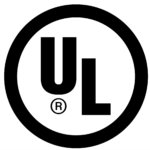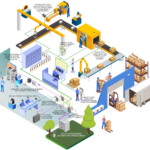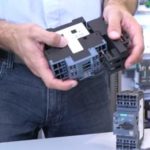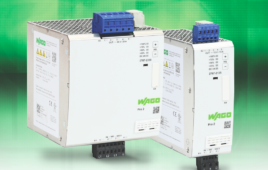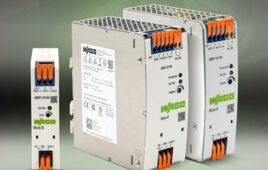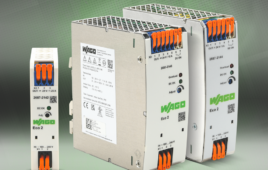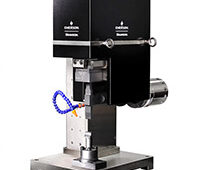Industrial power supplies are components that convert electrical power to other magnitudes and types. Many industrial power supplies convert this utility-mains ac power to an appropriate form of dc power. However, other industrial power supply modules execute dc to dc-power conversion — also written as dc/dc and dc-dc conversion. Called dc/dc or dc-to-dc converters, these industrial power supplies can either change high voltage levels to lower levels — or vice versa. The voltage levels these power converters handle widely vary.
How dc/dc converters work
Dc-to-dc industrial power supplies are switch-mode devices that use one of several switching techniques to perform the conversion. Switching is typically preferred for power conversion, as it’s far more efficient (producing less heat) than linear conversion systems. Dc to dc converters abound — with various topologies, flow directions, and board-level devices. Essentially though, all converters receive input dc power from a source … in industrial settings, typically an ac-to-dc industrial power supply connected to ac mains. Here’s the working principle at its most basic: Energy into the dc/dc converter from the ac/dc power supply momentarily collects in a storage element before releasing as the output voltage.
Of course, dc-to-dc industrial converters rely on other internal processes and working principles.
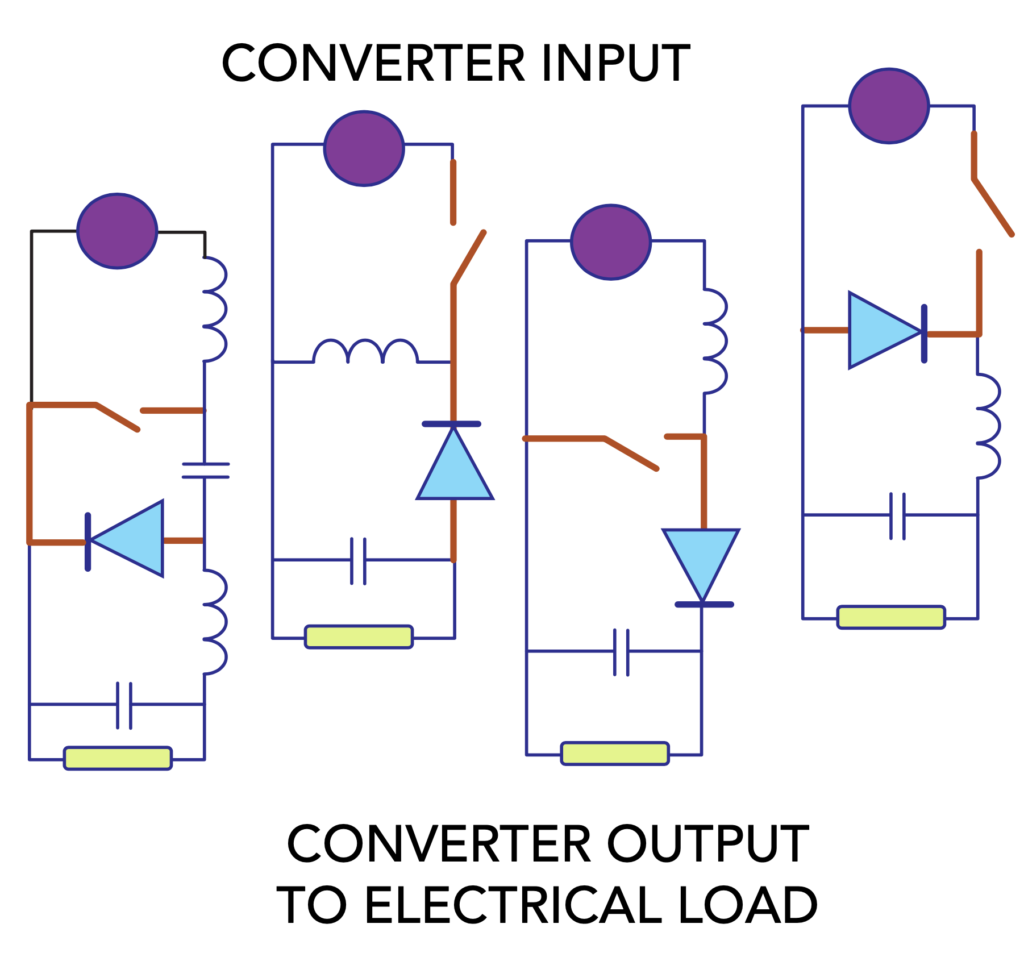
Non-isolated dc-to-dc power converters use MOSFET, IGBT, or BJT transistors in buck, boost, buck-boost, and Ćuk arrangements.
Depending on the power-converter type and primary function, it may include transformers, inductors, diodes, filters, and rectifiers. Dc/dc converters use closed feedback loops to maintain a constant output voltage irrespective of changing input voltages and output currents. These devices are usually rated in input voltage and current and output voltage and current.
Related:
Industrial power supplies and dc/dc converters
Batteries and DIN-rail battery chargers for uninterruptible power supplies (UPSs)
Overvoltage protection in the control cabinets of industrial automation
Solid-state relay characteristics and applications
Industrial components served by power supplies
The difference between contactors and motor starters (and reduced-voltage starters)
Some units may have voltage adjustment capabilities to let engineers adjust the output voltage within a specified range. Some converters may even include extra features such as built-in redundancy and reverse input polarity protection. While most dc/dc converters usually just have a single input, others offer dual or multiple-output configurations.
Types of dc-to-dc converters
The most common taxonomy for classifying dc/dc converter groups them according to the voltage change (or increase or decrease) the component performs … for dc-to-dc converter categories as follows.
Buck converters: Also known as step down converters, buck converters step down voltage to generate a lower voltage at output than what’s input. For example, a buck converter can supply 5 V from a 12-V input. The polarity of the voltage at the output matches that of the input.
Boost converters: These converters perform the opposite function of their buck counterparts. Also called step-up converters, these receive some voltage and boost it to a higher magnitude at the output. The output voltage maintains the input’s polarity.
Buck-boost converters: Buck-boost converters can increase or reduce voltage levels. In other words, these dual-purpose converters can act as buck or boost converters — though not simultaneously. Buck-boost converters can also reverse the voltage’s polarity. In fact, other variations of these converters abound. One is the so-called optimum topology converter or Ćuk converter (named after inventor Slobodan Ćuk) capable of zero-ripple current as well.
Single-ended primary-inductor converter or SEPIC: This is basically a boost converter preceding a buck-boost converter. These converters perform the same function as buck-boost converters … but have the advantage of generating output voltage with non-reversed polarity.
All these dc/dc converters comprise slightly varying components to execute what’s essentially non-isolated power conversion — because the output terminals share a common ground so aren’t electrically separated. Non-isolated converters store energy using inductors and capacitors. While these converters are less expensive, they produce more noise and aren’t suitable for high voltages. However, they are suitable for low-voltage applications … and are actually more ubiquitous in industrial applications.
In contrast, isolated converters electrically separate the transformer input and output … which is especially useful in high-voltage applications. Isolated converters subtypes include flyback, push-pull, forward, and full-bridge variations.
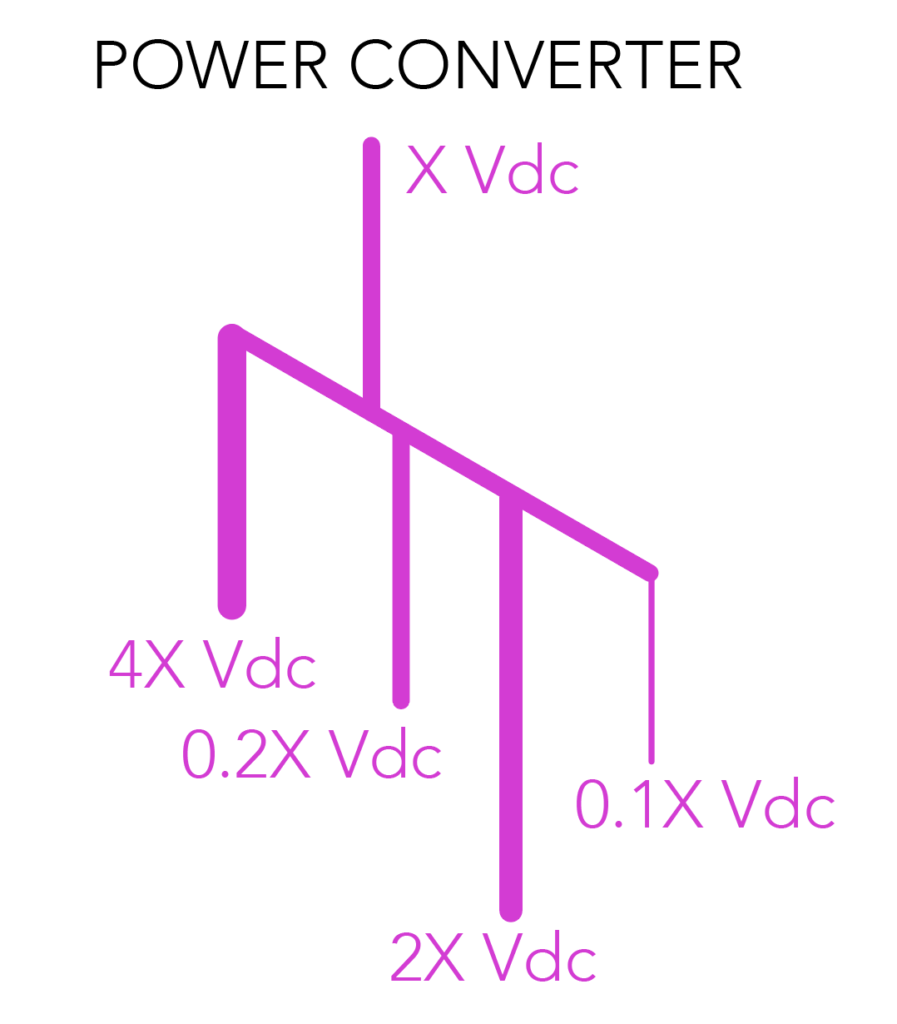
Shown here is just one typical dc-to-dc power converter application.
Common dc-to-dc converter uses
Dc-to-dc converters have numerous applications in industrial settings.
Supplying components with different ratings from the power supply: Industrial testing, monitoring, control, automation, and other dc-powered equipment uses various voltages. For example, control cabinets usually contain numerous collectively operating components that all rely on dc power of different voltage ratings. While industrial power supplies serve to convert input ac power to the required dc, they usually provide just a single voltage level at a time. Dc-to-dc converters supply power to various components at their respective required voltage levels. For example, a 24-V PLC and 12-V alarm might run off one 24-V ac-to-dc industrial power supply. Here, a 24-V to 12-V dc-to-dc converter can install between the power supply and alarm to step down the 24 V to the 12 V that the alarm needs. Any other components can be similarly served with converters of different ratings.
Addressing fluctuations: Some industrial power supplies may exhibit slight output voltage fluctuations. These rises and falls may be detrimental to attached equipment operations. Here, a dc-to-dc power supply can be added to maintain a steady voltage levels irrespective of input fluctuations.
Regulating power: During ac-to-dc conversion, voltage levels usually become cyclical. While power supplies usually include a capacitor filter to address wild changes, this is insufficient for eliminating ripples. Power supplies often feature a voltage regulator to further smooth voltage — though in unregulated industrial power supplies, this feature is absent. When using such modules, a dc-to-dc converter is essential to completely regulate the output voltage.
Compensating for voltage drops: Slight voltage drops may occur if power must travel through longer cables before it arrives at the powered equipment. what’s more, some power supplies can become increasingly inefficient with age — ultimately producing voltages lower than a rated voltage. Dc-to-dc converters in these scenarios can compensate for these losses by boosting supplied power to the right voltage level.
You may also like:
Filed Under: Power supplies

